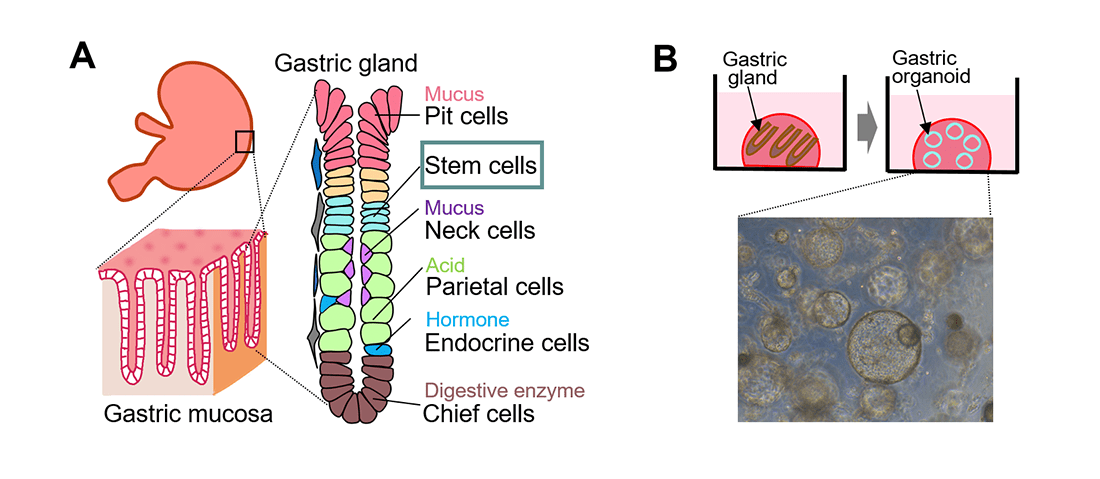2023.11.01
Deciphering the Dynamics of Gastric Homeostasis and Disease Pathogenesis via Gastric Organoid-Based Research
Stem Cell Technology・ Assistant Professor ・ Hitomi Takada
The stomach, a pivotal organ in the digestive system, is responsible for digesting food and sterilizing ingested materials. The surface of gastric mucosa is covered with gastric glands, which contain various functional epithelial cells. These include mucus-secreting pit cells, acid-secreting parietal cells, and chief cells that secrete digestive enzymes. These cells are turned over throughout life, which is maintained by the stem cells located in the isthmus region of the gastric glands. However, when inflammation arises due to Helicobacter pylori infection or the prolonged use of non-steroidal anti-inflammatory drugs, this stem cell differentiation process can become compromised, leading to atrophic gastritis and gastric ulcers. Our objective is to enhance the understanding of the mechanisms underlying the stomach homeostasis and the onset of gastric diseases, thereby aiding the development of innovative prevention and treatment methods for gastric disorders.
Hitomi Takada NAIST Edge BIO, e0018. (2023).

